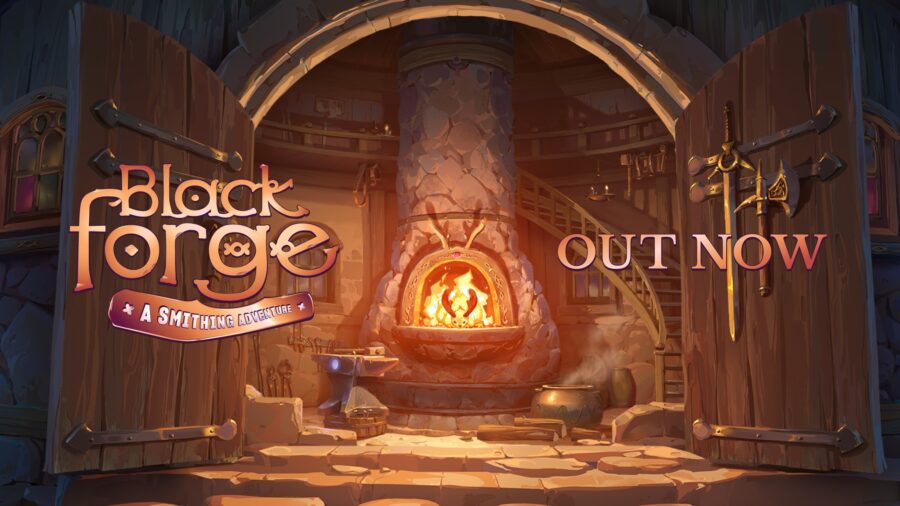
TL;DR for BlackForge: A Smithing Adventure
(played on a Meta Quest 3 128 GB model)
| Pros | Cons |
| + Creative core gameplay | – Janky pacing |
| + Good voice acting | – Inconsistent scoring parameters |
| + Charming aesthetic | – Annoying Bugs |
The gameplay for VR crafting simulator “BlackForge: A Smithing Adventure” is a mirror of its world design; a bright, warm hearth at the center of a low-resolution expanse.
In short, the central gameplay is unique; as much an artistic medium as it is a game.
But much of what surrounds that central gameplay is, unfortunately, tedium.
BlackForge has you playing as the newest torch-bearer in a lineage of legendary blacksmiths.
You’re taking over the magic smithy in the middle of a typical verdant fantasy land.
Immediately you meet “The Merchant”, a friendly ex-adventurer greeting you from the other side of your waist-high (though impassable) front gate.
The Merchant is your teacher, using the insight he’s gleaned watching your ancestors’ work to explain the game’s mechanics to you. He’s also your main point person to the outside world, bringing crafting requests from other adventurers he encounters and then delivering them your subsequent creations.
And if—like me—you’ve been peripherally taking in the Regency dramas your girlfriend has been watching lately, The Merchant might also be a wise and caring mentor with soft eyes and strong forearms; a forbidden love, forever on the other side of a barrier that neither of your hitboxes can move through.
The Merchant is the only person who truly sees you for who you are. Does he sense how you feel? Does he feel the same way?
I mean he’s always here, that must mean something!
He’s… always here.
Also he sells you stuff.
The game quickly creates a standard rhythm, which it follows and subtly expands on as you play: Crafting Daddy brings you requests from the surrounding townsfolk. You tend to those requests by chopping some wood and lathing it down to a handle of an appropriate size and shape.
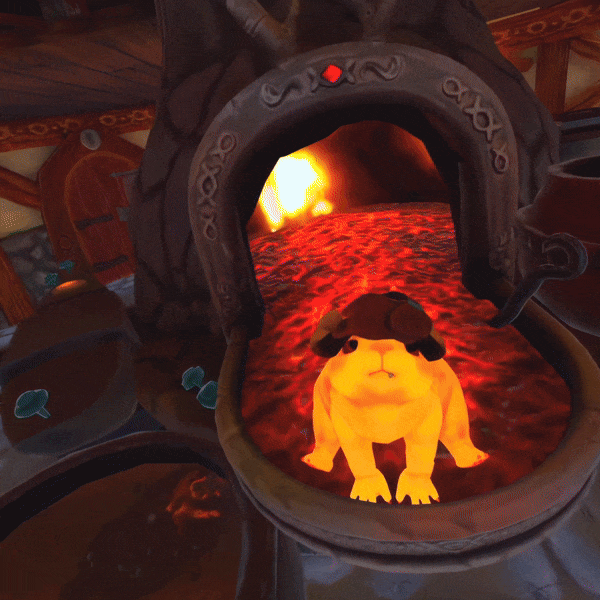
Then you smelt an ingot, and hammer that roughly into shape before grinding down its blemishes and attaching it to your handle to make a weapon or tool. Garnish with a leather grip or bit of decoration, and then give the piece to your mans to deliver.
When it works, it’s fun.
Crafting—the main thing you do in the game—is a good time.
Improving at the game—moving station to station; step to step—evoked a nostalgia in me; a long-forgotten sense-memory from my brief teenage stint in a restaurant, learning to cook on the line.
Chop. Lathe. Smelt. Hammer. Grind. Embellish.
These are the main beats you’ll hit to get into the BlackForge rhythm.
As you do so, you’ll gain confidence and finesse. Your creations will get more beautiful more easily, and you’ll feel a sense of artistic growth, like when learning an instrument or how to draw.
You’ll begin to move economically and gracefully, accidentally overworking blades and snapping handles less and less frequently.
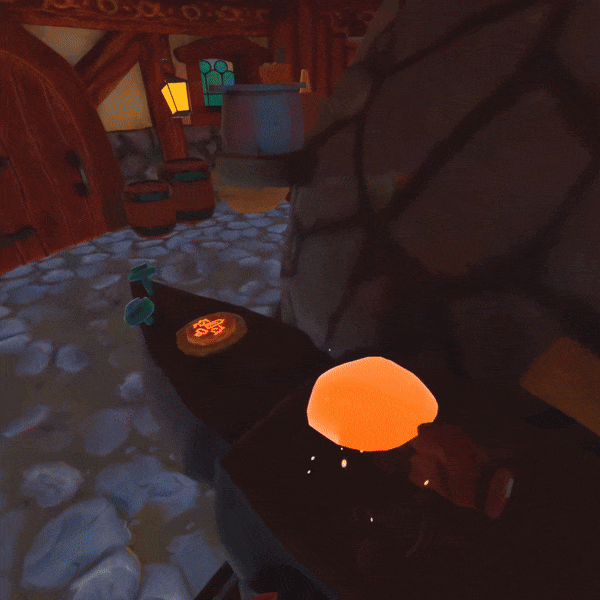
A BlackForge flow state has its limits, however:
Firstly, your metalworking tools are obtuse.
Now I do hesitate to make this critique since most crafting games just have a series of pre-made assets to be placed together and maybe some sliders to adjust. While BlackForge at least gives you the freedom of actually molding your creation; sculpting your art from a blank slate.
And this rightfully deserves praise.
Nonetheless, as I played I constantly confronted the reality that a big hammer and a broad grindstone don’t allow for fine work. Carving, scooping, cutting, or splitting your heated metal are all off the table (off the anvil?)
Even adjusting the depth of your hammer’s blows with the speed and strength of your strikes seems inexact enough that I’m still unsure if that’s actually a present feature or something I just convinced myself of.
But it’s a poor craftsman who blames his tools, and eventually, you learn to work with what you have. If you want to make a pitchfork, for example, you simply won’t be able to do it with a single ingot. Instead, you’ll smelt and mold the prongs separately before lifting your hammer—wreathing it with lightning—and striking each piece; fusing them magically.
Now I could stomach this metallurgical imprecision as a neutral facet of the game—just how it goes—were it not for the inconvenient way you’re made to detach weapon parts (should you need to) once you have fused them together.
While you can attach pieces one at a time, you can’t take pieces apart one at a time.
To remove a single piece from a particularly complex creation, you have to hit a button that turns your creation back into its composite parts, forcing you to then re-attach all of the pieces except the one you wanted to remove.
Secondly, the game is bad at evaluating your creations.
To advance in the game, your works must be found acceptable by the NPCs for whom you are smithing. But there’s a big problem here, and it comes down to the three types of weapons you can craft: “sharp”, “pointy”, and “blunt”.
As far as determining which is which, the game is not so sharp (to make my point bluntly).
Sharp objects are meant to have a sharp edge, like a knife or a sword. Pointy objects are meant to have a fine point, like a spear. And blunt objects… well, you get it. The game, however, often does not get it.
Most requests for a weapon come with a requisite type. You can test your weapons on a battle dummy in your yard to ensure that your points are pointy enough (and so on). You do this by hitting the dummy and matching the sound and particle effects of the strike to that of its corresponding weapon type.
Very often you’ll make a weapon that is totally obviously one type, only for it to be mistaken as another:
A perfect spear—one with a tip so fine that to grind it down any further would break it—will give an infuriating “thwack” when stabbed into the dummy, indicating that the game is categorizing it as blunt.
The blade of a knife—with a similarly unrefinable narrowness—will give a “ting”, indicating that it’s somehow pointy, even when all of its corners have been ground down to curves.
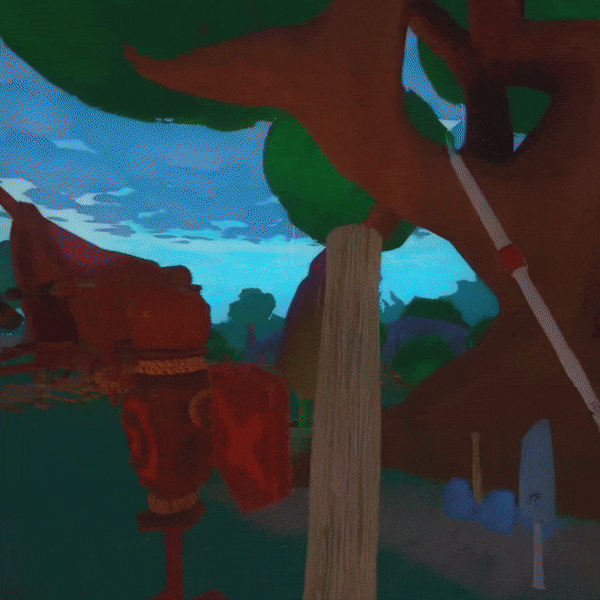
Determining which shapes are which might be a quite complicated set of calculations.
The near-infinite variability that comes with freely shaping a weapon could be something very hard to program an appraisal of. I really don’t know.
What I do know is that it’s currently a central part of the game and it doesn’t work very well.
Less urgently, the parameters you’re given to make a weapon—whether they be requirements of type as just mentioned or whether they be of length or weight or anything else—are sometimes just lies.
That is to say that someone might ask for a categorically “long” weapon. You’ll oblige. And then they’ll send it back to you asking you to make it short. Or maybe they’ll ask for something with a grip and then send it back asking you to remove the grip.
If this happened only occasionally it wouldn’t be an issue. Don’t get me wrong! Difficulty is fine. But when difficulty is shoehorned in artificially—when a game tells you the rules of engagement and then breaks them—it’s frustrating.
All of this inconsistency leads to a lot of stopping and starting.
So thirdly, BlackForge’s capacity to flow is impeded by its pacing.
Like I mentioned earlier, The Merchant gets crafting requests for you from town and you give him your completed works to deliver.
What that means for gameplay, unfortunately, is that there are long periods where you are just waiting for him.
And while this really ramps up the Regency vibes—putting me into the shoes of a forlorn debutante, desperately awaiting the arrival of the man in my life who has all the agency for both of us—it doesn’t do much for me as a blacksmith.
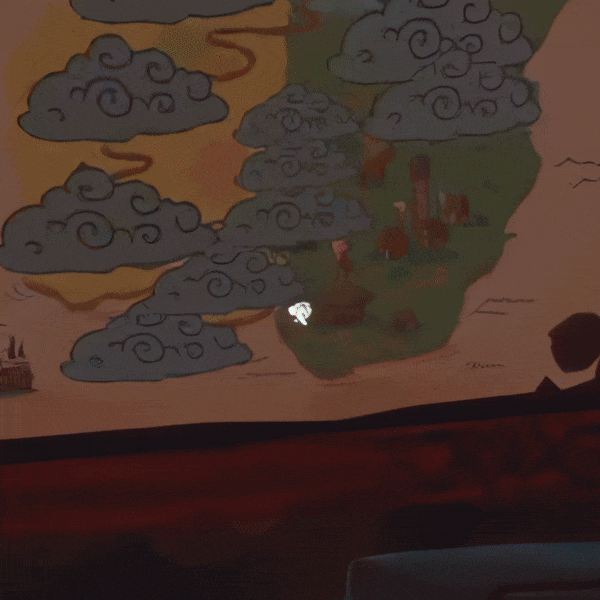
I can’t emphasize this point enough. I have nothing to say to expand on it. It is exactly as it sounds.
It takes time for The Merchant to move about the world, delivering your works and picking up requests. And if you have nothing to work on at the time—which happens often—then you’re going to have to wait for him to show up.
At one point in my playthrough, The Merchant came and went three times without adding anything new to the notice board. I was just sitting with nothing to do, clamouring for whatever hidden lever I had to pull to make something happen.
This turned out to be barely a metaphor, as, eventually, I reached out and grabbed at the nothing on the notice board out of desperation only to realize that— ah—the requests had become invisible for some reason.
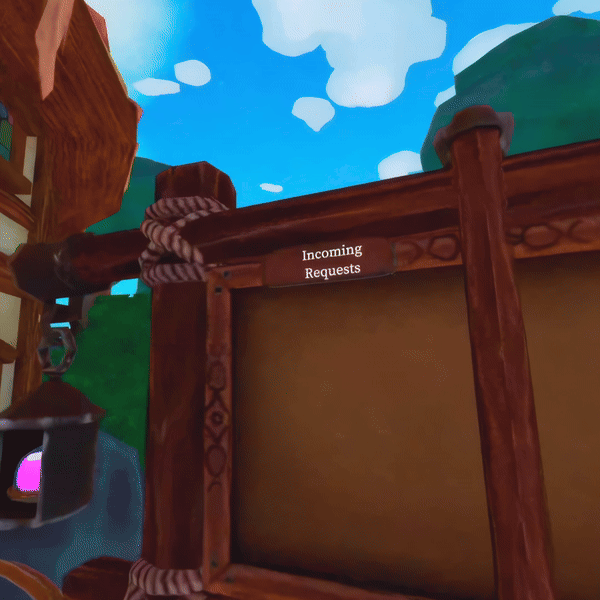
Additional bugs and glitches abound also. And while I won’t detail them all, I should mention that one of them was a game-breaker, forcing me to lose my progress and start over.
BlackForge: A Smithing Adventure has a charming—if simple—aesthetic enhanced by solid voice acting and informative sound design. But where the game really does well is in its hearth.
Its novel and creative core gameplay is the vital fire at the center of this title.
Unfortunately, that gameplay gets bogged down by bugs, inconsistent parameters, and a stumbling pace.
Indie developer Mana Brigade’s inaugural offering shows a commitment to making something unique. And with some polish, this piece could really shine.
For now, however, BlackForge: A Smithing Adventure gets a 5/10.
Scoring & Rubric
Scores are out of 10, where 10 is a masterpiece, 1 is unplayable, and 5 is just average.
Gameplay is weighted heavier in the overall score.
Gameplay – 5
Immersion – 7
Visuals – 6
Sound – 6
Performance – 3
Replayability – 6
Image credit: Meta.com
About the author
Kierkegaard once said that the artist is like one stuck inside Phalaris' brass bull, which burned up its victims and—due to the formation of its apertures—made beautiful music from their anguish.
The critic, he said, is just like the artist except he doesn't have the anguish in his heart nor the music on his lips.
A lifelong gamer based out of Vancouver, Pelé disagrees with Kierkegaard.




